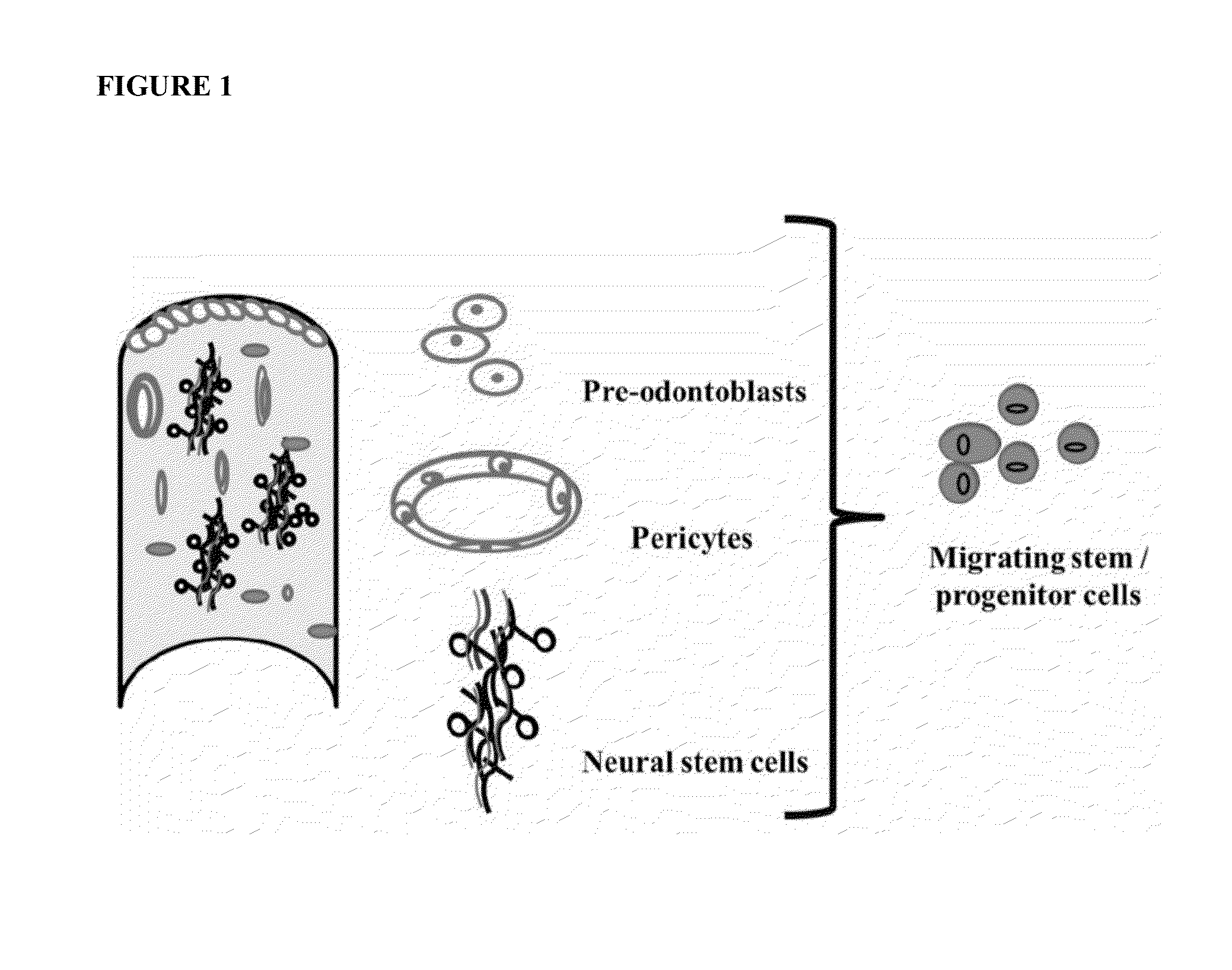Multifunctional immature dental pulp stem cells and therapeutic applications
a dental pulp and stem cell technology, applied in the field of multifunctional immature dental pulp stem cells, can solve the problems of limited differentiation capacity, es cell use has generated a lot of controversy, adult stem cells are not able to build a whole organism, etc., and achieve the effects of reducing immunogenicity potential, preventing karyotype mutations, and reducing risk of tumorogenicity
- Summary
- Abstract
- Description
- Claims
- Application Information
AI Technical Summary
Benefits of technology
Problems solved by technology
Method used
Image
Examples
example 1
Neural Differentiation of IDPSCs
[0312]IDPSC were cultured before confluence, which is equal to 2×106 in 25 cm2 in basal culture medium. Next the cells were washed two times in PBS, and the basal culture medium was changed to Neurobasal culture medium supplemented with 2% B27 (NB+B27). Culture medium should be changed in 3-4 days. After one week, the cells were harvested following a 0.25% trypsin / EDTA treatment for 2-3 min and neutralized with the same culture medium. Following centrifugation at 800×g for 5 min, the cell pellet was obtained and supernatant was removed. Next IDPSC were gently disaggregated in NB+B27 and seeded onto 6 Petri dishes 9.6 cm2. Retinoic acid was added at a final concentration 0.1 μM for 24 hours after which time mature neurons were obtained.
[0313]Using this protocol for neural differentiation, differentiation of IDPSC into neurons and glial cells, concurrently, in the same culture plate was observed (FIG. 3).
example 2
Neuronal Phenotype Analysis
[0314]Additionally, in order to study the morphology of neurons hematoxylin and eosin (H & E) staining was used (FIG. 4). It was possible to observe both the network formed by differentiating cells and cells that showed the morphology of those in the process of acquiring a neuronal phenotype (FIGS. 4A-4C). Neutral red was used for staining of Nissl granules in neurons (FIG. 4D-4F), which are rough endoplasmic reticulum with rosettes of free ribosomes and are the site of protein synthesis.
example 3
Identification of Aneuploidy and Cell Fusion as Important Features for Optional Support of a Subpopulation of Tetraploid Retinal Ganglion Cells (RGCs)
[0315]During the process of neural differentiation, it was found that some cells were binuclear (or multinuclear). This fact would be an indication that cell fusion occurred in IDPSC during differentiation. In FIG. 4E a neuron with multiple nucleuses can be observed. These cytological data were confirmed fluorescence in situ hybridization (FISH) (FIG. 5).
[0316]Counts of hybridization signals for human chromosome 21 in the nuclei of differentiated IDPSCs was performed by FISH and demonstrated a rate of cell fusion estimated around 25% of cell nuclei with more than two hybridization probe signals (FIG. 6). Overall, 250 nuclei were counted.
[0317]To carry out the FISH analysis a specific probe LSI 21 (Vysis) to the region of chromosome 21 associated with Down's syndrome was used. The FISH protocol was used according to the manufacturer's i...
PUM
| Property | Measurement | Unit |
|---|---|---|
| temperature | aaaaa | aaaaa |
| pH | aaaaa | aaaaa |
| pH | aaaaa | aaaaa |
Abstract
Description
Claims
Application Information
 Login to View More
Login to View More - R&D
- Intellectual Property
- Life Sciences
- Materials
- Tech Scout
- Unparalleled Data Quality
- Higher Quality Content
- 60% Fewer Hallucinations
Browse by: Latest US Patents, China's latest patents, Technical Efficacy Thesaurus, Application Domain, Technology Topic, Popular Technical Reports.
© 2025 PatSnap. All rights reserved.Legal|Privacy policy|Modern Slavery Act Transparency Statement|Sitemap|About US| Contact US: help@patsnap.com



